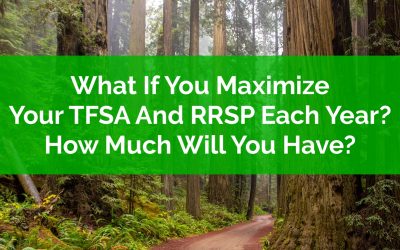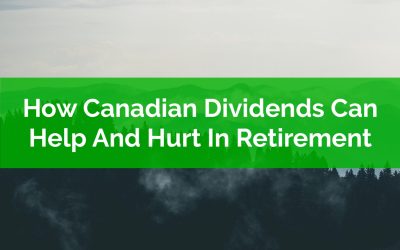Thank you for joining the waitlist!
You’re on the list for early access!
We will contact you via email when we’re ready for you to start your self-directed financial plan. In the mean time here is a quick preview…
Check out our latest blog posts…
What If You Maximize Your TFSA and RRSP Each Year How Much Money Would You Have?
What if you maximize your TFSA and RRSP each year, how much money would you have in the future? If you just had one singular focus, how much could you accumulate? And would it be enough for retirement?
The TFSA and RRSP are two amazing tax advantaged accounts. They allow investments to grow tax free or tax deferred. They can be used to save and invest for retirement. Over time these contributions grow considerably with dividend income, interest income, and capital gains.
For the RRSP, new contribution room is based on 18% of the previous year’s employment income.
For the TFSA, new contribution is a set amount that grows with inflation in $500 increments.
Depending on your income level, maximizing both your RRSP and TFSA could mean a savings rate of 20%, or 25%, or 30% or even 35%+ at lower income levels.
That’s a high savings rate!
So, we can already anticipate that by maximizing the RRSP and TFSA every year we will probably end up with a sizable amount of financial assets, but how much exactly?
Is it $1 million?
Is it $2 million?
Is it $3 million or more?
In this blog post we’re going to have a little fun; we’re going to take a look at how much money you could accumulate if you just maximized new RRSP and TFSA contribution room each year.
Watch Out For These Sneaky Tax Increases Next Year
Most governments try to avoid raising tax rates. It’s an unpopular move. It creates headlines. It causes a sharp drop in popularity. So how do governments earn more tax revenue? They increase taxes in a sneaky way. Some provincial governments have done this in the past and a few are still doing it now.
You may not have seen these tax increases reported in the media, but next year you may notice your tax bill increase, especially if you live in certain provinces.
If you find yourself with a little less cash flow next year, this might be why.
Not all provinces do this. But some provinces are sneakily increase tax next year. Some have been doing this same thing for years.
Are you in a province that is increasing taxes? Find the details at the end of the post.
How Canadian Dividends Can Both Help And Hurt In Retirement
In the last post we highlighted how Canadian dividends receive special tax treatment which can lead to very low and even negative tax rates at some income levels. But before you go and shift your portfolio towards Canadian dividends it’s important to understand how Canadian dividends can either help or hurt your situation, especially in retirement.
Canadian dividends are taxed in a particular way which can lead to some unintended consequences, especially when government benefits are involved. While Canadian dividends can lead to lower tax rates, they can also lead to higher benefit clawbacks on GIS and OAS benefits.
If you can avoid these pitfalls then Canadian dividends, when used strategically, can allow you to withdraw from an RRSP and pay no additional tax.
In this blog post we’re going to look at three examples of how Canadian eligible dividends can both help and hurt in retirement.



